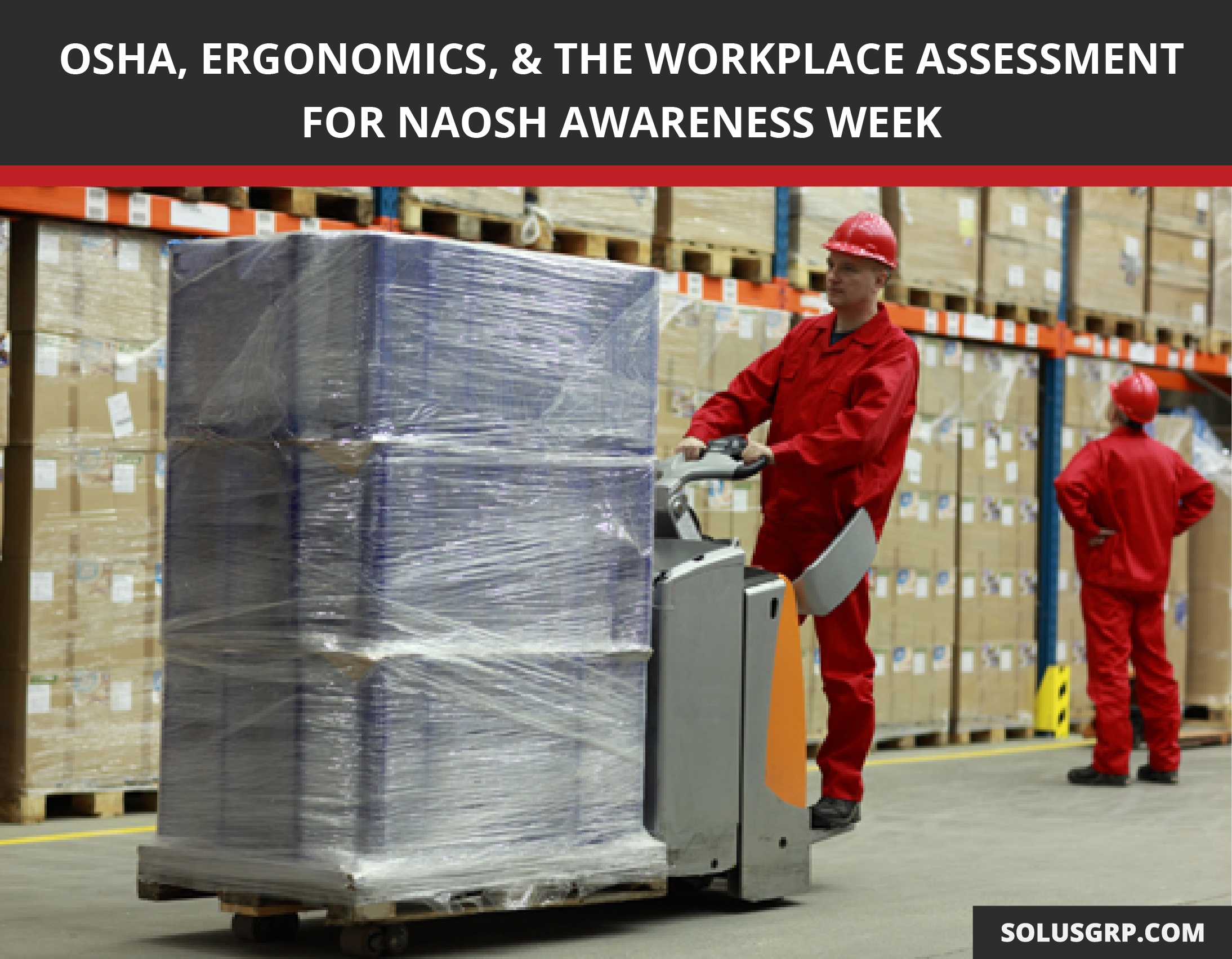We use cookies to make your experience better. To comply with the new e-Privacy directive, we need to ask for your consent to set the cookies. Learn more.
OSHA, Ergonomics, and the Workplace Assessment for NAOSH Awareness Week
North American Occupational Safety & Health (NAOSH) Awareness Week is a great time to perform an ergonomics assessment to improve worker morale and production. This simple OSHA Ergonomics checklist identifies trouble spots that can be eliminated by making changes to scheduling, techniques, or equipment. Let's take a look at some common jobs in manufacturing, warehousing, and distribution centers to see how better ergonomics can reduce injuries and improve productivity.
Packing/Unpacking Pallets
The ultimate goal when packing or unpacking pallets is safety, which is best achieved by reducing wasted or repetitive motions. Notably, this improves efficiency, as well. Equipment that repositions pallets or boxes can eliminate much of this unnecessary movement. For instance, a pallet carousel can lift, lower, or rotate a pallet to an optimal position to reduce reaching and bending. This not only saves energy for faster packing, but also reduces the risk of costly and painful injuries. 
No matter how ergonomic your equipment is, job rotation is a powerful way to eliminate repetitive motion injuries. If an employee is repeating a motion more than 100 times per hour, there's a significant injury risk, no matter how benign the motion seems. Be sure to allow appropriate breaks and rotate employees to different jobs so they can rest overworked muscle groups.
Shipping and Receiving
Shipping and receiving rooms can be a major bottleneck and a significant injury risk if they are not designed appropriately. Again, the culprit is poor ergonomics. Eliminate this problematic scenario by configuring your workstations to the specific needs of your operation and employees.
A Solus Group Shipping and Receiving Desk is configurable for left- or right-handed employees, which eliminates reaching awkwardly across the desk for supplies or labels. Barcode scanners, label dispensers, and computer monitors can be placed in the best location to keep product flowing through this all-important workstation. By arranging the elements of a desk exactly where they are needed, employees can eliminate unnecessary motions and save energy.
Facilities Maintenance
From waste management to landscaping, maintenance workers face a slew of injury risks throughout the day. The main hazard is handling heavy, awkward loads, so workers in this department must be educated on how to lift safely. This includes how to lift with the legs, when to request help from a coworker, and when to rely on assistive lifting devices.
Bin dumpers are crucial to running a safe and lean facilities maintenance department. These hydraulic devices lift and dump trash, recycling, and compost while the operator stays safely behind a screen. Because of their high load capacity (The DumpMaster, for instance, can handle 660 pounds.), crews can get more work done with fewer people. As long as staff can safely wheel a bin to the tipper, the tipper does the heavy lifting and nullifies the injury risk.
Give Your Staff Equipment and Education
Educating your staff while providing them with ergonomic equipment is the best path to a productive, injury-free workplace. And when staff are healthier, business is more productive. According to the Centers for Disease Control and Prevention (CDC), the average musculoskeletal disorder results in an average of eight days off work. Less serious injuries may not completely sideline workers, but energy and efficiency will be sapped by these nagging problems.
Because of the negative impact of injuries, an ergonomics assessment is beneficial to everyone. Staff are happier and healthier when they have the knowledge and equipment they need to get their job done safely. Management sees a boost in productivity while maintaining compliance with OSHA and other regulatory agencies. Good ergonomics is the rare instance in which government regulators, employees, and management all have the same goal. There's no better time than NAOSH Awareness Week to get started improving ergonomics!
References:
"Ergonomic Assessment Checklist." OSHA. Occupational Safety and Health Administration, U.S. Department of Labor, n.d. PDF. 13 Mar. 2018.
"Work-Related Musculoskeletal Disorders & Ergonomics." CDC. Centers for Disease Control and Prevention, 1 Mar. 2016. Web. 13 Mar. 2018.
